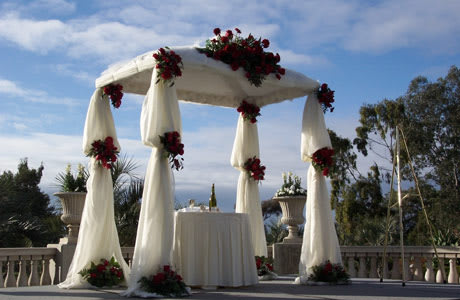The three-week period from the 17th of Tammuz to the ninth of Av is marked by various mourning customs meant to commemorate the destruction of the Temple. For example, Ashkenazim don’t conduct weddings during this period, and haircuts are also forbidden.
However, some customs of mourning over the destruction are relevant year-round. For example, the Shulchan Arukh states that someone who builds a house leaves a bit unfinished, and someone who sets the table for a grand feast leaves a bit undone (OC 560).
The source for these customs is found in Bava Batra (60b). The gemara tells us that after the destruction there were people who took mourning to great extremes; they wanted to avoid all meat, since these had been offered as sacrifices; all bread, since the show- bread was no more; they were even concerned about drinking water, since the Sukkot water libations could no longer be brought! The tanna Rebbe Yehoshua gently corrected them with the following language: “Thus said the sages: One whitewashes his house, but leaves a small amount; one prepares all the needs of a feast, but leaves out a bit.”
Rebbe Yehoshua’s explanation is remarkable for both its words and its content. We may note that these mourning customs exist only against the backdrop of simcha; a person who doesn’t whitewash his house, or doesn’t prepare a great feast, is unable to fulfill them! Furthermore, the language begins with the directive for life, including joy, to continue: first he states, “One whitewashes his house”; afterwards, he qualifies “but leaves a small amount”. (Later sages in the gemara explain that we need to leave one square tefach, about half a meter, across from the entrance.) Then he states, “one prepares the needs of a feast”, only then explaining that a bit must be left out.
The custom of mourning for the destruction does not call for an end to joy and celebration. The exact opposite is true: these customs exist only as a contrast to celebration. A well-known Chasidic epigram notes that the Shulchan Arukh, citing the sages, opens the laws of Av mourning with the words, “When Av comes in rejoicing is diminished” (OC 551). We infer that rejoicing must be present; otherwise, it could not be reduced.
Even the verse cited by Rebbe Yehoshua carries this message: “If I forget you, Yerushalayim, may my right hand forget; may my tongue stick to my palate if I don’t remember you, if I don’t set Yerushalayim at the head of my joy” (Tehillim 137:6). Here also, the call is to set Yerushalayim at the head of our rejoicing.
This is only natural. Yerushalayim and the Temple were above all, a place of joy, of communal rejoicing in G-d’s presence. When we want to remember the Temple, the most natural time is a time of joy. However, we must also remember that until the Sanctuary is rebuilt and the Divine presence returns completely, our joy is incomplete. Therefore, commemorations of the destruction are specifically at joyous occasions, but express themselves in a lack of completion.
Rabbi Asher Meir is the author of the book Meaning in Mitzvot, distributed by Feldheim. The book provides insights into the inner meaning of our daily practices, following the order of the 221 chapters of the Kitzur Shulchan Aruch.
The words of this author reflect his/her own opinions and do not necessarily represent the official position of the Orthodox Union.
